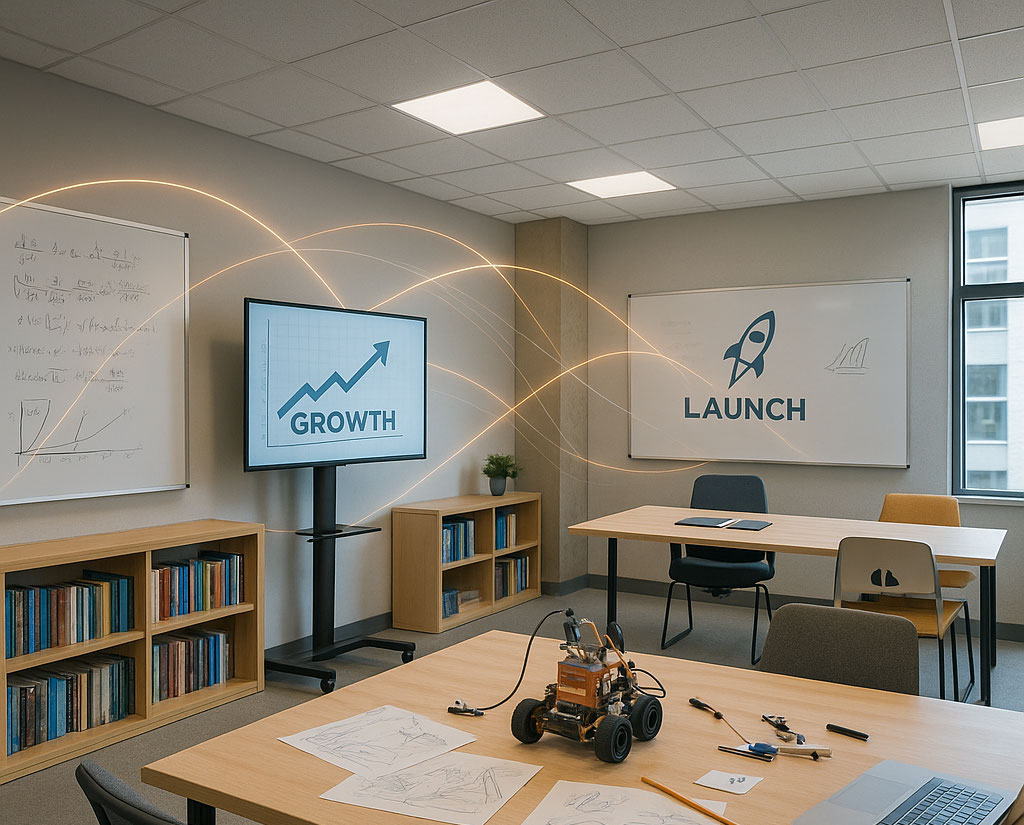
It used to be that if organizations wanted to innovate, they were on their own. Henry Chesbrough, a former manager in the computer disk drive industry and author of the book, “Open Innovation” recalls in an article in Forbes that when he worked in Silicon Valley he was frustrated that there weren’t more useful ideas and advice from academia. “It seemed like the concerns of professors and the concerns of managers like me were far, far apart.”
Wikipedia credits Chesbrough with coining the term “open innovation,” but of course the concept has been around since the 18th century.
They say necessity is the mother of invention, and this most definitely applies to the world of innovation. So many things have changed over the last 20 or 30 years that impact the way business is done, including:
- The advent of the internet, opening the world to business, trade, and human connection.
- Major technology developments
- A new, younger workforce
When you consider all these factors, it’s no surprise that business strategy has evolved from the traditional model to a more modern model. That’s where open innovation comes into play.
What is open innovation?
Open innovation simply means that instead of the old models where organizations rely on their employees, specifically their R&D teams, to generate development based on internal wisdom, they venture to get input from the outside.
As Chesbrough points out in his book, one of the features of open innovation is the “outside in” aspect, where external ideas and technologies are brought into the firm’s own innovation process. The other, less commonly recognized aspect is the “inside out” part, where unutilized and underutilized ideas and technologies in the firm are allowed to go outside to be incorporated into others’ innovation processes.
At the heart of open innovation is collaboration, and the acknowledgement that the smartest minds in the world are out there among us, and not necessarily here in the building.
A cool history of open innovation
Back in the 1700’s, Europe's major seafaring powers--England, Portugal, Spain, the Netherlands, the Venetian Republic, and France each offered vast prizes to stimulate innovation on the era's crucial problem--how to find longitude at sea.
According to the Smithsonian, the problem of finding longitude at sea was finally solved by John Harrison in the 18th century with the invention of a seaworthy precision clock known as the marine chronometer.
Establishing the feasibility of using an accurate clock at sea to determine longitude was a turning point, setting the stage for the clock's relationship to navigation in subsequent centuries--not only at sea, but on land, in the air, and in outer space.
In the mid 20th Century, several trailblazing corporations started to get hip to the advantages of open innovation. These are some examples of important early collaborative milestones:
Cisco’s customer-driven innovation strategy helped them overperform Bell Labs and Lucent.
Eli-Lilly made use of collective intelligence to improve the traditionally low innovation success rates in the pharmaceutical industry.
Procter & Gamble managed to have up to 50% of their innovations coming from the outside and, consequently, their R&D productivity increased by 60%.
Collaboration is the new competition
Every now and then a crisis occurs on such a grand scale (a global pandemic, for example) requiring urgent solutions, not just for the scientific community but for consumers, patients, seniors, doctors, schools, parents, companies, restaurants, etc.
Photo by Emin BAYCAN on Unsplash
A chance to be part of history
In the scary early months of the Covid-19 crisis, something surprisingly uplifting started to happen: innovation was encouraged and welcomed, and it came from every corner of society. School kids figured out how to make masks, repurposing fabric, and other materials they could find on hand at home. STEM teachers stepped up to make masks and face shields using 3D printers. Ford is working together with the United Auto Workers, GE Healthcare, and 3M to build ventilators in Michigan using F-150 seat fans, portable battery packs, and 3D printed parts. This is a great example of open innovation united around a noble cause that, in the midst of a horrible pandemic has definitely been one of the bright spots.
Remember when the Diamond Princess cruise ship was docked with a literal boatload of people getting infected with coronavirus? That gave MIT scientist Lee Weinstein clues as to how this virus, obviously airborne, was getting to people who were closed off in their cabins.
Weinstein is a brilliant guy (he invented Laser Tag!) So he was not playing when he got down to testing the effectiveness of the variety of masks that people are using to prevent the spread of coronavirus. In this podcast, Weinstein explains how he went out and bought a $6,000 machine that counts particles. He offered for people to send him masks from anywhere, and he would test them to determine the filtration efficiency of the masks. This helped the public determine the quality masks from the knockoffs, and probably ended up in saving many lives. No one paid Weintstein for his services, he simply wanted to use his science expertise to help people avoid this deadly virus.
At heroX, we are proud to say that we have been involved in several high-level COVID-19 innovation challenges. McGill University, in partnership with the Montreal General Hospital Foundation, joined forces with HeroX, to launch the "Made for All" challenge. This is phase two of the Code Life Ventilator Challenge, which invited thousands of innovators to design an affordable ventilator. Now, the race is on to bring these ventilators to broad use as soon as possible so that developing countries have access to them.
Another heroX challenges we are so incredibly honored to be a part of is NASA’s Lunar Delivery Challenge. The aim of this challenge is to use the wisdom of the heroX crowd and knowledge from a wide range of industries to identify promising new approaches to logistics that could provide safer, more reliable and highly efficient methods for building and operating a remote base camp over a number of decades in an extremely hostile and unforgiving environment.
Future exploration of the moon and ultimately the sending of humans to Mars will also be completely reliant on whichever system or systems NASA adopts. HeroX solvers therefore have an unprecedented opportunity to provide a solution that will underpin the most challenging and exciting decades in the history of human exploration.
Guy Kawasaki, in his awesome Ted Talk on the Art of Innovation, reminds us that the purpose of innovation is not to make money, it is to make meaning. When you make meaning, you are changing the world. It follows that if you happen to change the world, you will probably make money. The examples he gives of companies that changed the world:
- Apple - wanted to democratize computers
- Google - wanted to democratize information
- Ebay - wanted to democratize commerce
- YouTube - wanted to enable people to create, upload, and share video
Ultimately, people who come together on platforms like HeroX are drawn to innovation not simply because there might be a monetary reward, but because they might end up changing the world.








